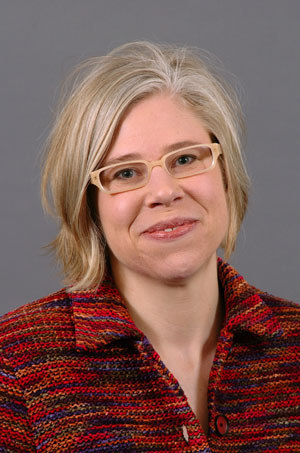Faculty Profile
Elizabeth Lee
Professor of Art History (2006)Contact Information
Weiss Center for the Arts
717-245-1259
Bio
Professor Lee teaches courses in modern, contemporary and American art. Her research on American art and the history of the body, health and medicine has appeared in numerous publications, including the journals American Art, Archives of American Art Journal andThe Brooklyn Rail, as well as the edited volumes Routledge Companion to Art and Disability (Routledge, 2022) and Modernism, Art, Therapy (Yale, 2024). Her book, The Medicine of Art: Disease and the Aesthetic Object in Gilded Age America (Bloomsbury, 2022), features an interrelated series of case studies focused on major Gilded Age artists—John Singer Sargent, Abbott Thayer, Augustus Saint-Gaudens—and one collector, Charles Lang Freer, to show how works of art were marked by disease and functioned in medicinal terms for artists and viewers in the late nineteenth century. She is currently working on Eadweard Muybridge's photographs of neurological patients created at the University of Pennsylvania for Animal Locomotion (1887).
Education
- B.A., Wake Forest University, 1990
- M.A., University of Minnesota, 1993
- Ph.D., Indiana University, 2002
2025-2026 Academic Year
Fall 2025
ARTH 314 Contemporary Art
This course addresses a period of artistic production from the late 1960s to the present. It showcases key artists and artistic movements within a broad historical framework, highlighting major issues and important debates. Some of the themes discussed in the course include the changing nature of artistic practice in recent decades; the intersection of the body in contemporary art with issues of gender, sexuality, ethnicity and race; the role of art in public spaces; the rise of new media; the place of art within galleries, museums and other art-world institutions; the global nature of contemporary art; and art as an agent of protest and social change. Assigned readings include a variety of art historical analyses, artist interviews and writings, essays by art critics and other writers with backgrounds in such areas as philosophy, gender studies and critical race theory.
Prerequisite: 102 or permission of the instructor.
ARTH 407 Art History Senior Seminar
An intensive seminar wherein students conduct original research on selected works of art as part of curating a formal, public exhibition in The Trout Gallery. Research is directed towards interpretive essays that go through multiple writing revisions, resulting in a publishedexhibition catalogue edited by the seminar faculty member and Trout Gallery Staff, and designed by Dickinson College Design Services Staff. Students work collaboratively as curators and contributors to the catalogue, and undertake a professional-level experience, most often reserved for graduate study or museum professionals. All of the senior majors' art historical knowledge and critical skills will be put to use in the Senior Seminar with the goal of further refining their ability to conduct advanced research and formal, polished writing.Prerequisite: Senior Art History majors only.
Spring 2026
ARTH 102 Introduction History of Art
This course surveys art of the European renaissance through the contemporary period. Art will be examined within the historical context in which it was produced, with attention to contemporary social, political, religious, and intellectual movements. Students will examine the meaning and function of art within the different historical periods. In addition, students will learn to analyze and identify different artistic styles.
ARTH 204 American Art
This course begins with the earliest depictions of indigenous people by European explorers and expands to consider how artists responded to the colonization and domestication of North American land. It considers how tensions around slavery in nineteenth-century American imagery played out differently across audience, medium and context and how slaves resisted narratives of white dominance and oppression. It also examines the impact of urbanization, immigration and the rise of consumer culture on the content and circulation of art, concluding with the social dislocation of the 1930s Depression and the onset of WW2. Students can expect to leave the course with a more complex understanding of American identity and cultural politics, while also developing crucial skills in critical reading, writing and visual analysis across a range of artifacts and media.<
